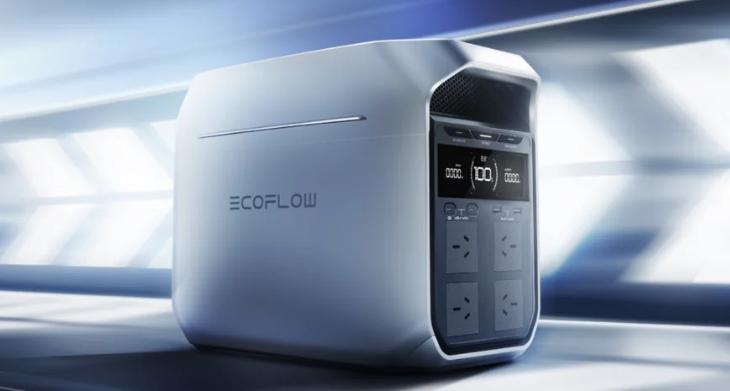Choosing the right portable power station can transform your outdoor trips and provide vital backup during unexpected blackouts at home. These compact, powerful devices are designed to deliver electricity where and when you need it, making them essential for off-grid activities and emergency scenarios. This guide walks you through the key features, use cases, and important considerations when shopping for a unit in 2025. Whether you’re powering a campsite, recharging devices remotely, or preparing for power outages, understanding what sets the best stations apart is the first step toward a smart investment.
Table of Contents
ToggleWhat Is a Portable Power Station?
Key Components and How They Work
The core components of a portable power station include the battery, inverter, and charge controller. The battery stores energy (commonly lithium-ion or LiFePO4), while the inverter converts DC to AC power, enabling you to plug in household electronics. The charge controller manages the flow of electricity during charging, whether from wall outlets, car ports, or solar panels. Some models also feature display screens for real-time power monitoring. Together, these components ensure safe, efficient energy delivery for a variety of personal and professional needs.
Common Applications and Use Cases
Portable power stations serve many use cases beyond outdoor camping. For adventurers, they power lighting, cookers, GPS units, and phones in off-grid environments. RV travelers rely on them to run small appliances or medical equipment without plugging into shore power. At home, they offer essential backup for phones, routers, laptops, or even CPAP machines during outages. Their versatility makes them valuable for outdoor work sites, photography, boating, and festivals. As solar compatibility increases, these devices also attract users aiming for greener energy solutions.
Factors to Consider Before Buying
Power Output and Battery Capacity
Choosing the right output and capacity is key. Power output, measured in watts, dictates what devices you can run. Battery capacity, measured in watt-hours (Wh), determines how long the station will last per charge. For example, a 500Wh unit might power a 60W laptop for about 8 hours. You should always overestimate your power needs to avoid running out of juice. If you plan to use energy-intensive devices, consider models with high output ratings and reserve capacity to handle surges.
Port Types and Device Compatibility
Ensure the power station has ports that match your devices. Most units come with a mix of AC outlets, USB-A, USB-C, DC carports, and sometimes Anderson or XT60 ports for solar charging. If you’re charging a phone, a USB is enough—but for laptops or CPAPs, you’ll need an AC port. Look for PD-enabled USB-C ports for faster charging. The greater the variety of ports, the more versatile the unit. Always double-check voltage and amperage compatibility to avoid issues with sensitive electronics.
Weight, Size, and Portability
Weight and size impact how easy your power station is to carry and store. Lightweight models under 10kg are ideal for backpackers and campers. Larger, high-capacity units (over 15kg) work better for car camping or home backup but may be cumbersome for mobile use. Some units come with handles or wheels to aid portability. Consider your typical use case: if you plan to carry it often, opt for a compact model; if it stays mostly in one place, prioritize features over portability.

Tips for Getting the Most Out of Your Power Station
Charging and Storage Best Practices
To extend battery life, charge your power station regularly—even during off-seasons. Avoid letting it sit fully discharged, which can degrade the cells. Store the unit in a cool, dry place away from direct sunlight. Many manufacturers recommend charging every 3-6 months if not in regular use. Also, don’t store it while it’s plugged in or fully charged long-term, as this may stress the battery. Follow your model’s user manual for specific charging intervals and voltage maintenance tips.
Solar Charging and Accessory Compatibility
Solar charging adds flexibility for off-grid use. Not all stations include panels, so ensure compatibility with solar inputs and connectors like MC4 or Anderson. The solar input wattage will affect how fast your battery recharges. Some stations allow daisy-chaining panels to increase input. Look for models with MPPT (Maximum Power Point Tracking) for better solar efficiency. Also, consider other accessories—like carrying cases, extension cords, or protective covers—to enhance durability and ease of use during travel or adverse weather.
Conclusion
Portable power stations offer convenience, security, and independence—whether you’re camping, working off-grid, or preparing for emergencies. With many options on the market, understanding their components, power specs, port types, and usage scenarios will help you choose wisely. Consider your needs for capacity, portability, and recharging, and don’t overlook solar compatibility if sustainability matters to you. Whether you’re choosing a high-capacity Camping battery or a compact unit for backup use, this 2025 guide gives you the insights to select a portable power station that matches your lifestyle and energy demands, making you ready for whatever comes next.











